The study examines historical changes in the size and location of schools in New Jersey and their relevance to children walking and bicycling to school.
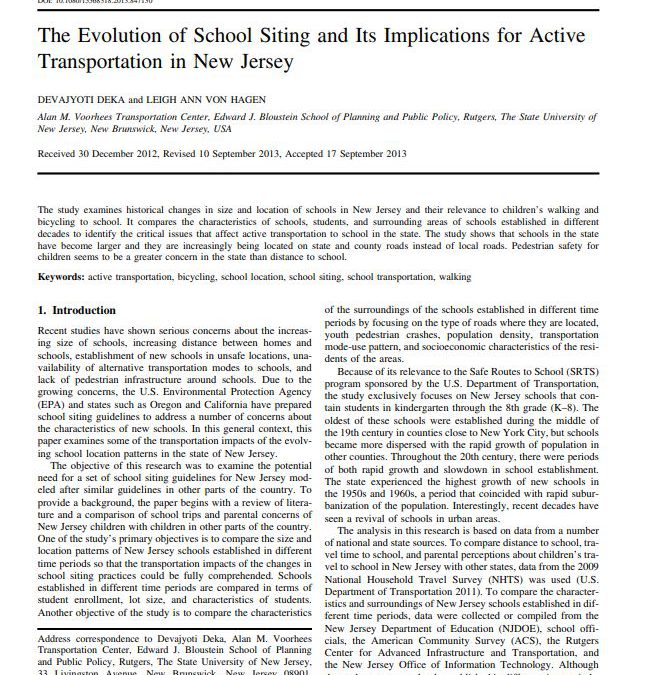

The study examines historical changes in the size and location of schools in New Jersey and their relevance to children walking and bicycling to school.
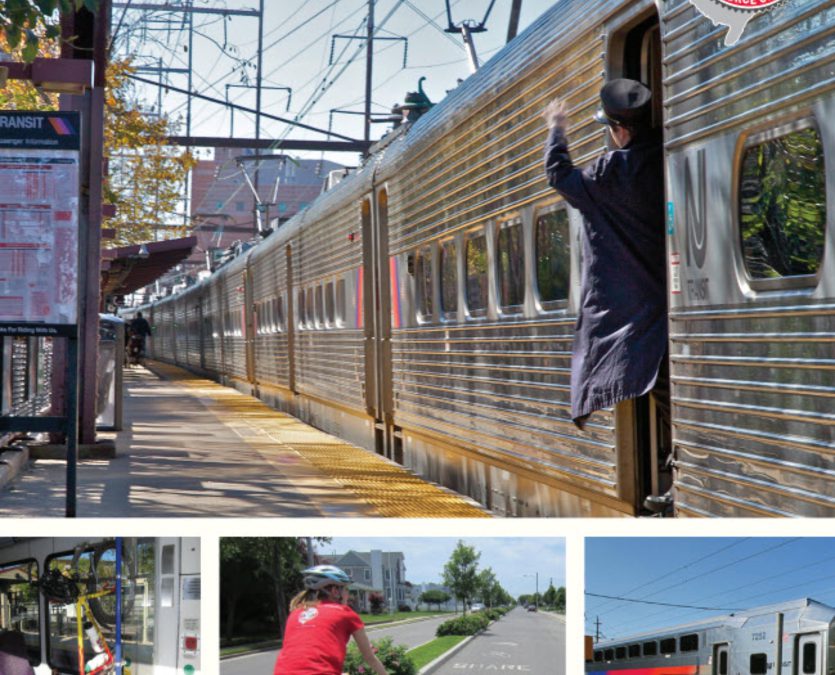
An effort to benchmark the current state of travel by a unique set of travelers, transit riders who travel to stations by bicycle.
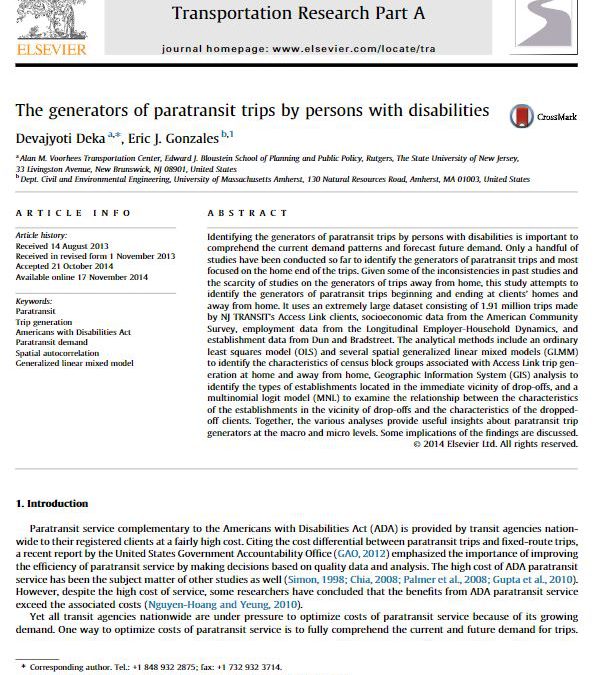
This study attempts to identify the generators of paratransit trips beginning and ending at clients’ homes and away from home.
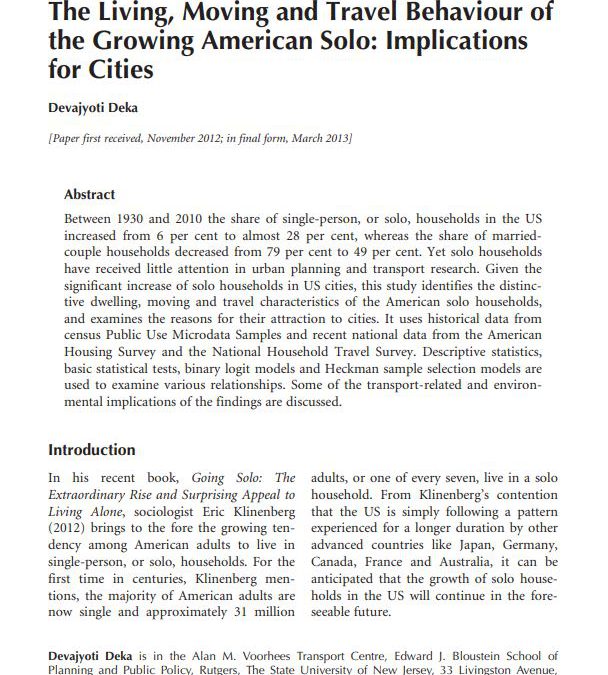
This study identifies the distinctive dwelling, moving and travel characteristics of the American solo households, and examines the reasons for their attraction to cities.
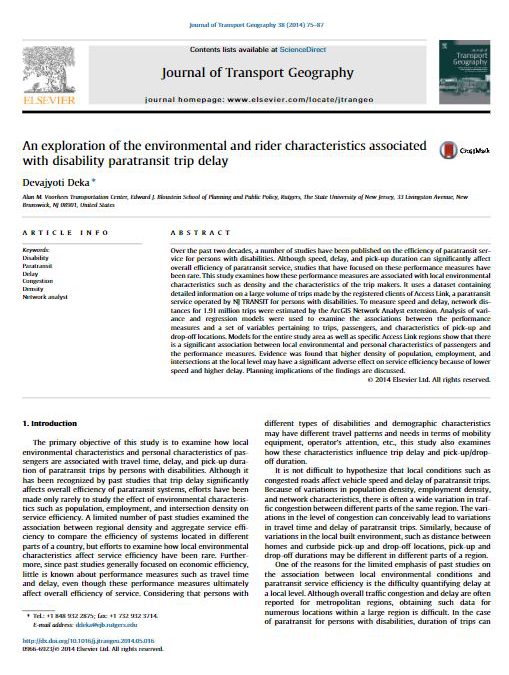
This study examines how performance measures are associated with local environmental characteristics such as density and the characteristics of the trip makers.
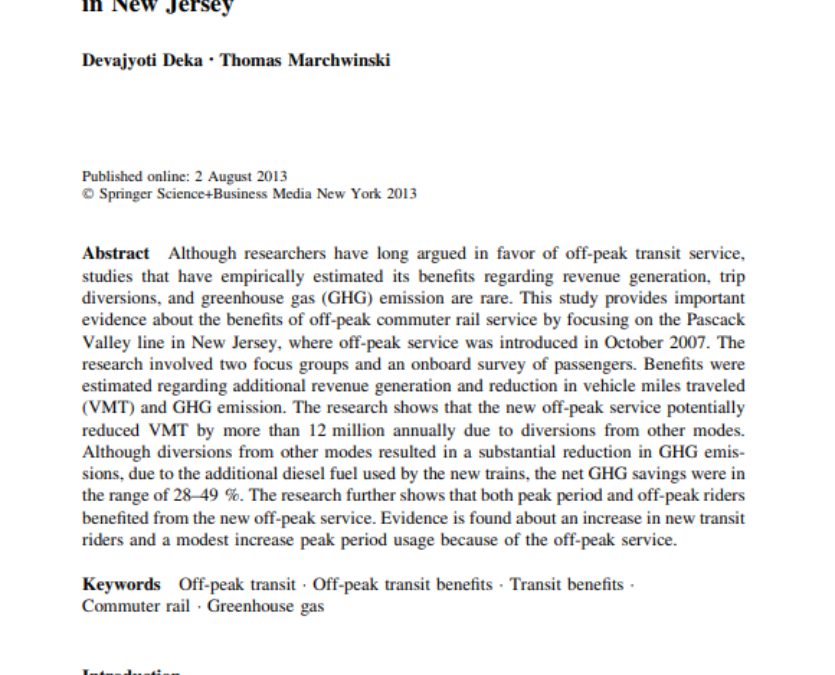
This study provides important evidence about the benefits of off-peak commuter rail service by focusing on the Pascack Valley line in New Jersey, where off-peak service was introduced in October 2007.
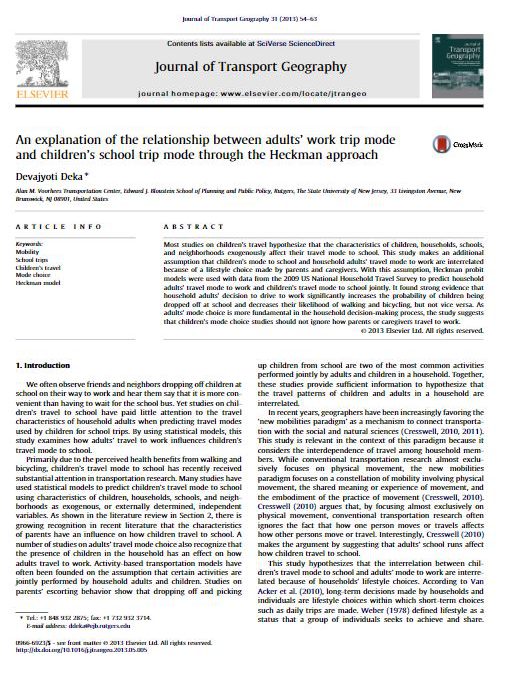
This study makes an additional assumption that children’s mode to school and household adults’ travel mode to work are interrelated because of a lifestyle choice made by parents and caregivers.
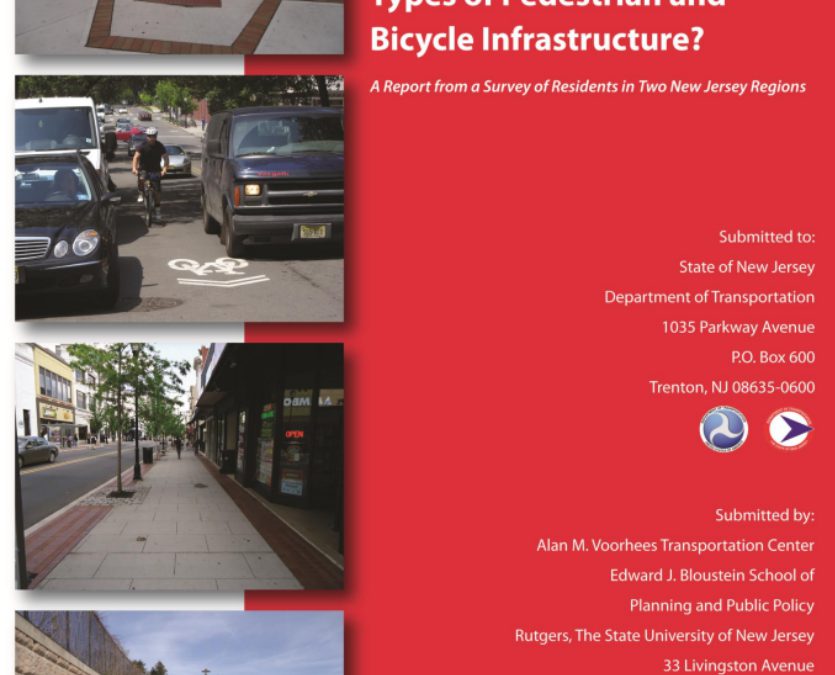
A survey of New Jersey residents specifically focused on people’s valuation of different types of bicycle and pedestrian infrastructure and the reasons for their valuation in two large regions of the state.
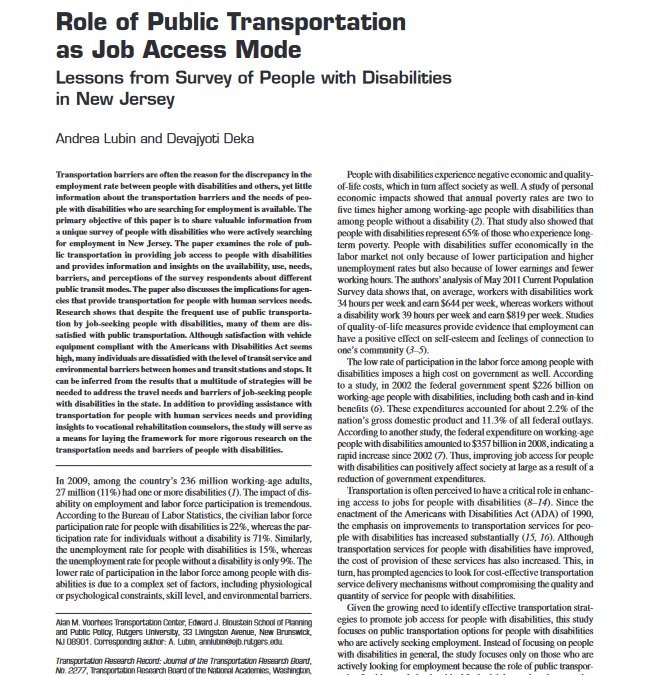
The primary objective of this paper is to share valuable information from a unique survey of people with disabilities who were actively searching for employment in New Jersey.
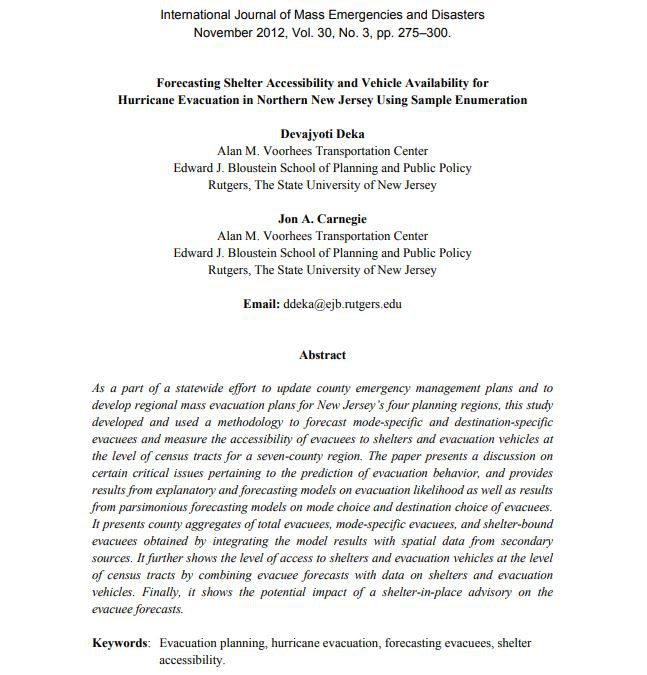
This study developed and used a methodology to forecast mode-specific and destination-specific evacuees and measure the accessibility of evacuees to shelters and evacuation vehicles at the level of census tracts for a seven-county region.
With improved portability and affordability, eye tracking devices have facilitated an expanding range of cycling experiments aimed at understanding cycling behavior and potential risks. Given the complexity of cyclists’ visual behavior and gaze measurements, we...
We contribute to the literature on new mobilities by measuring spatial disparities in travel times for accessing essential non-work destinations via ridehailing. We focused on healthcare, restaurants, and grocery destinations in Chicago. Data from Chicago ridehailing...
How and why do zero-car households seek car access? We used a national online survey of 830 American adults and interviews with twenty-nine low- and moderate-income travelers about their car access behaviors to answer this question. We validated our findings with the...
We examine who can work from home during the pandemic and whether this behavior will persist post-pandemic by conducting two representative online surveys in New Jersey. Results suggest those with higher educational attainment, higher incomes, and prior experience...